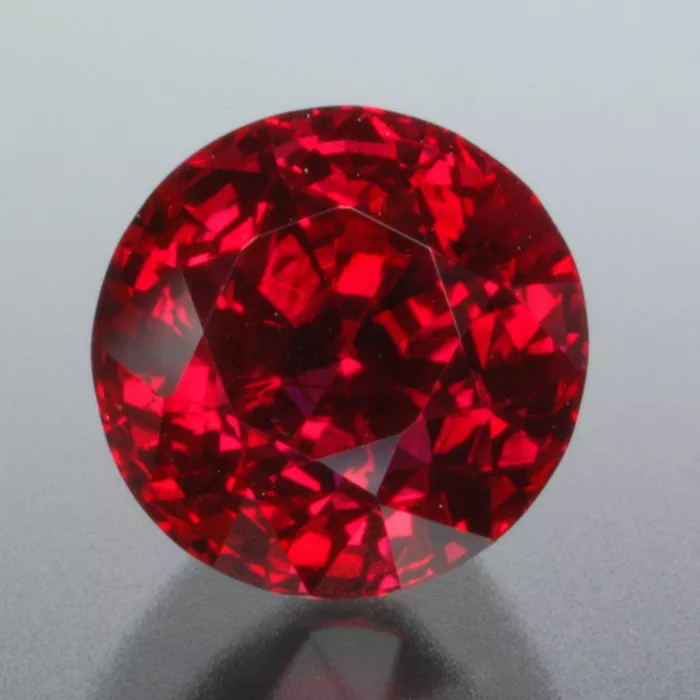Rubies, with their rich red hues and captivating allure, have long been regarded as one of the most sought-after gemstones in the world. These exquisite gems, symbolizing passion and power, have adorned the crowns of royalty and captured the hearts of collectors and enthusiasts alike. However, the question remains: Is ruby expensive? In this article, we embark on a journey to explore the price spectrum of rubies and uncover the factors that influence their pricing.
Understanding the Rarity of Rubies:
Rubies belong to the corundum family of gemstones, which also includes sapphires. While sapphires come in a wide range of colors, rubies are specifically recognized for their vibrant red hues. The scarcity of high-quality rubies in nature contributes to their perceived value and often places them in the higher price range among gemstones.
Evaluating Factors that Influence Ruby Pricing:
Color – The Primary Determinant:
The color of a ruby is the primary factor in determining its value. Rubies with intense, vivid red hues command higher prices compared to those with lighter or less saturated tones. The most valuable rubies exhibit a deep crimson color, often referred to as “pigeon blood red,” which is highly coveted by collectors and connoisseurs.
Clarity – Balancing Transparency and Inclusions:
Clarity refers to the presence or absence of internal characteristics, known as inclusions, within the ruby. Inclusions are natural features formed during the gemstone’s growth process and can vary in size, type, and visibility. While flawless rubies are incredibly rare, certain types of inclusions can enhance a ruby’s beauty and authenticity. However, excessive inclusions that affect transparency and overall appearance may lower a ruby’s value.
Cut – Maximizing Beauty and Brilliance:
The precision and quality of a ruby’s cut significantly impact its beauty and brilliance. A well-cut ruby maximizes light reflection and refraction, revealing the gemstone’s full potential. Skilled lapidaries consider the stone’s shape, size, and natural crystal structure when determining the ideal cut. Rubies with superior cuts showcase exceptional brilliance, fire, and play of light, thereby increasing their value.
Carat Weight – Size Matters:
Carat weight is another factor influencing a ruby’s price. Larger rubies generally command higher prices compared to smaller ones of similar quality. However, it is important to note that carat weight alone does not determine a ruby’s value; it must be considered in conjunction with other factors such as color, clarity, and cut.
Geographic Origin and its Impact on Pricing:
The geographical origin of a ruby can also influence its price. Historically, specific regions have gained a reputation for producing rubies of exceptional quality, which drives up their market value. Myanmar (formerly Burma) is renowned for its exquisite “Mogok Valley” rubies, known for their intense red color and fine clarity. Other notable sources include Thailand, Sri Lanka, Madagascar, and Tanzania. Rubies from these esteemed origins are often priced higher due to their reputation and demand.
Heat Treatment and its Effect on Pricing:
Heat treatment is a common practice in the ruby industry. This process involves subjecting the gemstone to high temperatures to enhance its color and clarity. Most rubies on the market have undergone heat treatment, which is an accepted industry practice. Heat-treated rubies can still be valuable and beautiful but are generally priced lower than untreated or “no-heat” rubies, which are considered rarer and more desirable.
Market Demand and Trends:
The dynamics of supply and demand play a significant role in determining ruby prices. Market trends, consumer preferences, and cultural influences can impact the perceived value of rubies. Changes in fashion, shifts in popular color choices, and evolving consumer tastes can affect demand and subsequently influence pricing. Rubies with unique qualities or exceptional rarity may experience increased demand and higher prices due to their exclusivity.
Rarity and Investment Value:
The rarity of high-quality rubies adds to their allure and investment appeal. Fine rubies, particularly those exhibiting exceptional color, clarity, and size, are considered not only beautiful gemstones but also alternative investment assets. The limited availability of top-grade rubies ensures their enduring value and potential for appreciation over time, making them an attractive choice for investors seeking tangible assets.
Conclusion:
In conclusion, while rubies can be expensive, their price varies depending on several factors. Color is the primary determinant of ruby value, with intense red hues commanding higher prices. Clarity, cut, and carat weight also contribute to pricing, with higher-quality characteristics generally resulting in increased costs. The geographic origin of a ruby, presence of heat treatment, market demand and trends, as well as the rarity of certain rubies, also play a significant role in determining their prices.
Whether you are a collector, an investor, or simply someone who appreciates the beauty of rubies, understanding the factors that influence their pricing can help you make informed decisions and choose a ruby that aligns with your preferences and budget. Ultimately, the value of a ruby goes beyond its price, as it is a testament to nature’s artistry and the enduring allure of these captivating gemstones.
Related topics:
- Emerald and Ruby: Which Is More Expensive?
- What type of ruby is the most valuable: A Simple Guide
- What do raw rubies look like: A Quick Guide


